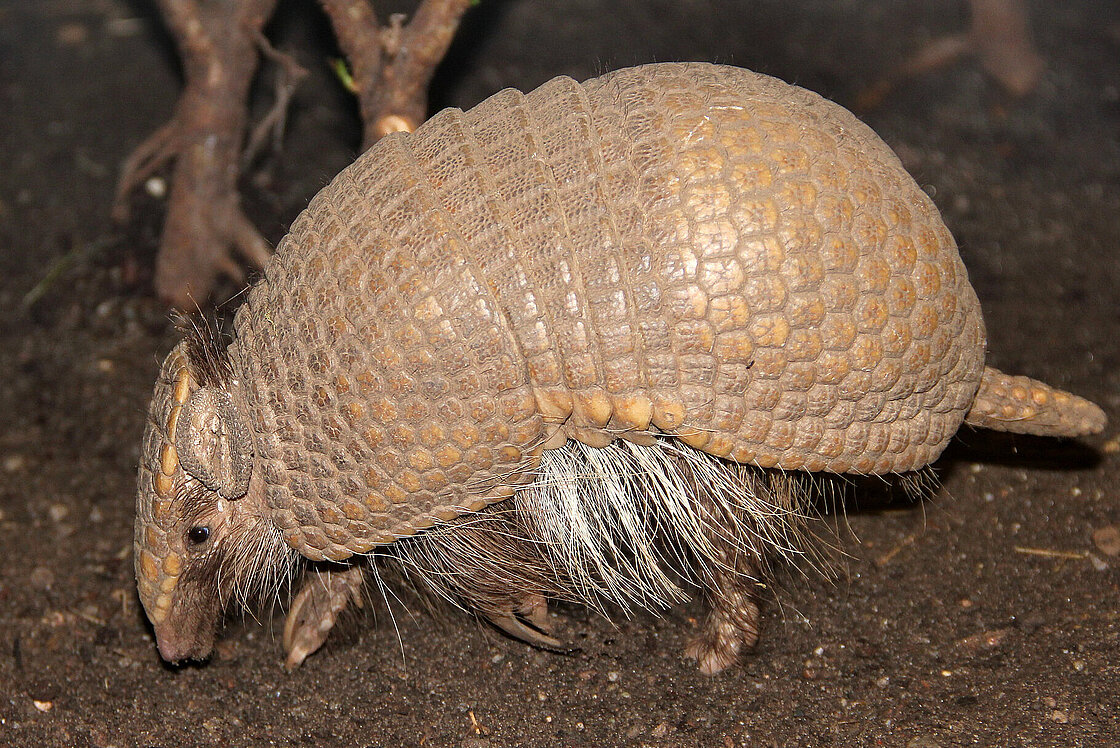

Los datos de los ejemplares fueron cotejados y suplementados con literatura y registros fotográficos. Fueron examinados especímenes de xenartros de todas las principales colecciones paraguayas y especímenes depositados en colecciones internaciona-les. Este trabajo pretende reunir información de especímenes y literatura que pueda servir de base para la estimula-ción de futuras investigaciones sobre las especies del país. Más aún, errores y contradicciones persisten en la literatura. Distribución y estado de los Xenarthra de Paraguay: hacia una comprensión más completa Resumen A pesar de su riqueza en cuanto a número de especies, los armadillos y osos hormigueros del Paraguay han recibido poca atención de biólogos o naturalistas y pocos datos fueron publicados sobre la distribución y estatus de las especies. The southern portion of the Oriental region has been virtually unsampled. Distribution in the Oriental region is poorly understood, and species that are confined to that region are known from few specimens. It is concluded that available data on Paraguayan Xenarthra shows a heavy bias taxonomically towards a few species (Dasypus novemcinctus, Tolypeutes matacus, and Euphractus sexcinctus) and geographically towards the Chaco region. Most xenarthran specimens were collected at least 35 years ago, and the specimen record may no longer represent current distribution given the rapidly changing landscape in the country. There is no evidence that Bradypus variegatus occurs in Paraguay.

hybridus were examined and their distribution is clarified. Specimens of both Dasypus septemcinctus septemcinc tus and D. Relevant discussion and distribution maps are provided for each species. Thirteen species (11 armadillos and two anteaters) are confirmed to be present in Paraguay. Distribution data are provided according to a hierarchy of record reliability including examined specimens, non-examined specimens, literature records, photographic records, and significant observations. Specimen data were collated and supplemented with literature and photographic data. Xenarthran specimens in all the major Paraguayan collections and all significant specimens in international collections were examined. This paper collates specimen and literature data about this group to act as a basis for the stimulation of future research. Furthermore, errors and contradictions persist in the literature. Based on our review, it appears the carapace has been a major determinant of the lifestyle of armadillos and has played a central role in shaping the evolution of many other features of these animals.ĭespite great xenarthran biodiversity, the Paraguayan armadillos and anteaters have received little attention from biologists and few data have been published about the distribution and status of the species.

In mammals, there has been growing interest in describing an ecological “lifestyle” as the particular way in which each species makes its living, and how this lifestyle constrains the evolution of other phenotypic traits. Finally, this network of relationships may help to explain the lack of any obvious kin-selected altruism in the polyembryonic armadillos, such as the nine-banded armadillo (Dasypus novemcinctus), because of time and energy constraints associated with a short active period devoted almost exclusively to feeding. Additionally, in mammals, armor has been linked with relatively slow plantigrade locomotion, which in turn may have promoted the low metabolic rate and exploitation of a low quality diet typically observed in armadillos. Effects range from physiological impacts on respiration and thermoregulation, to mechanical and other constraints on reproduction. Here, we review some of the many ways in which the carapace may have influenced the evolution of other features of extant armadillos (Xenarthra: Cingulata). Without doubt, the possession of an armored carapace represents one of the most conspicuous morphological features of all cingulates.


 0 kommentar(er)
0 kommentar(er)
